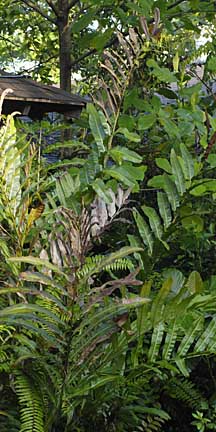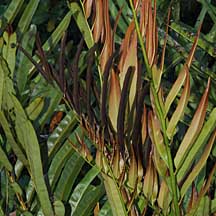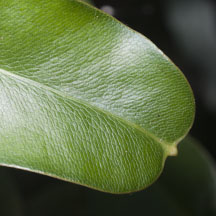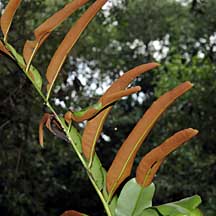 |
|
| plants text index | photo index |
| mangroves | Acrostichum in general |
| Piai
raya Acrostichum aureum Family Pteridaceae updated Jan 2013 Where seen? This humungous fern is often seen in back mangroves, flourishing on mud lobster mounds and other higher ground along the coasts including reclaimed land. According to Giersen, it does not tolerate as much inundation by seawater as Piai lasu (A. speciosum), and prefers bright, sunny areas. In cleared mangroves, this fern can dominate and thus considered a nuisance plant. Features: The leaflets are broader and longer (1-4m long) than those of Piai lasu (A. speciosum) and young fronds are crimson red. Rhizomes and base of the leaf stalks covered with scales up to 4cm long. The first 5-8 pairs near the tips are fertile leaflets, the underside covered below with red-brown spores (sporangia). Sterile leaflets have a rounded tip sometimes with a small sharp point. See the main page on mangrove ferns for their human uses. |
 Sungei Buloh Wetland Reserve, Mar 09 |
 Young fronds are red. Sungei Buloh Wetland Reserve, Mar 09 |
 Sterile leaves have blunt tips sometimes with a small sharp point. Pasir Ris, Sep 09 |
 Fertile fronds with spores. Pasir Ris, Apr 09 |
| Piai raya on Singapore shores |
| Photos of Piai raya for free download from wildsingapore flickr |
| Distribution in Singapore on this wildsingapore flickr map |
|
Links
References
|
|
|